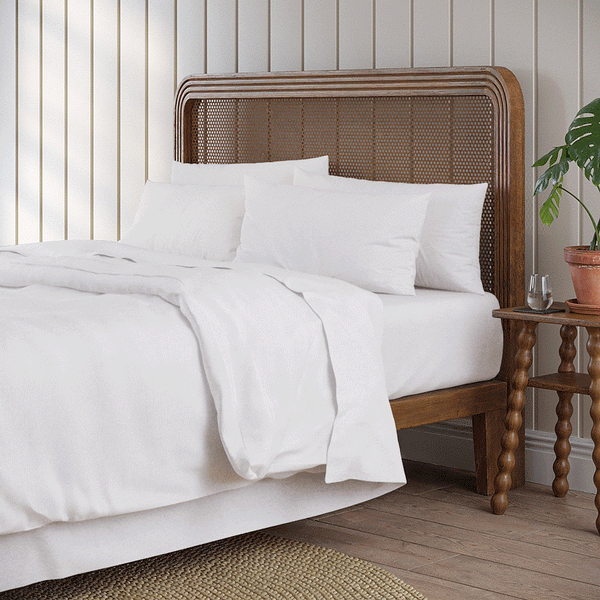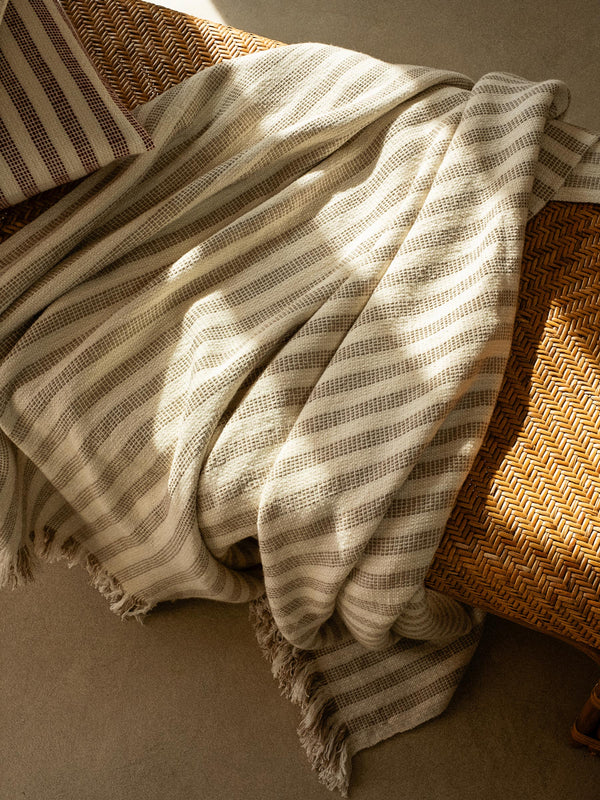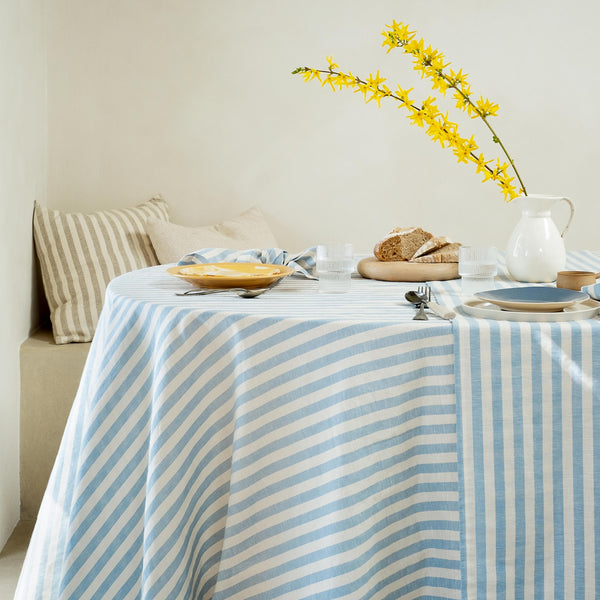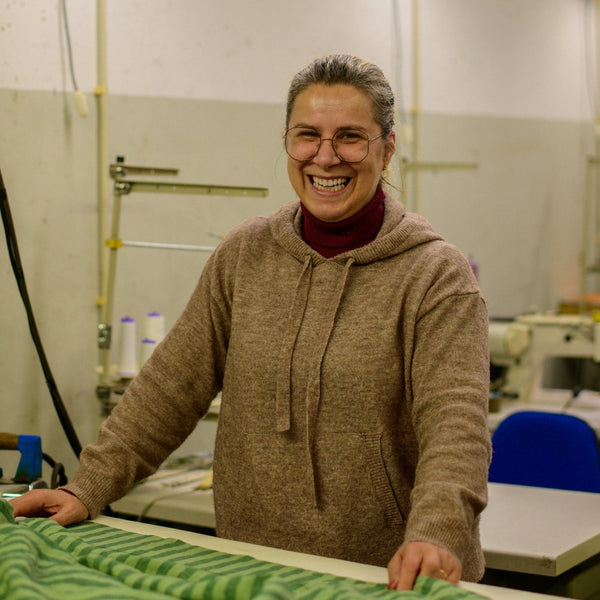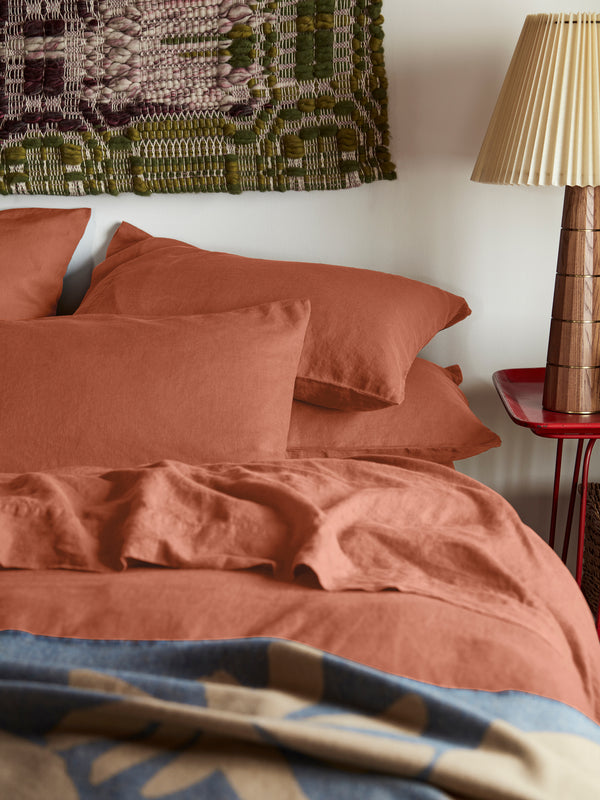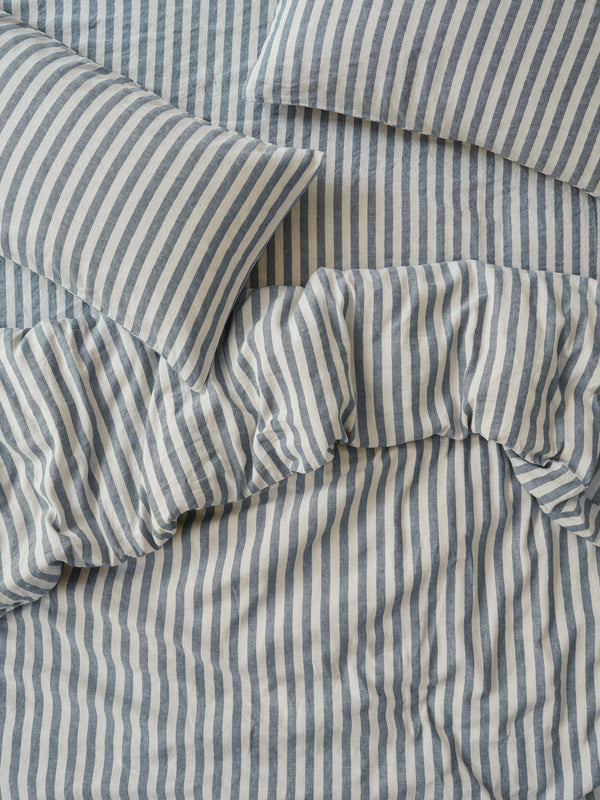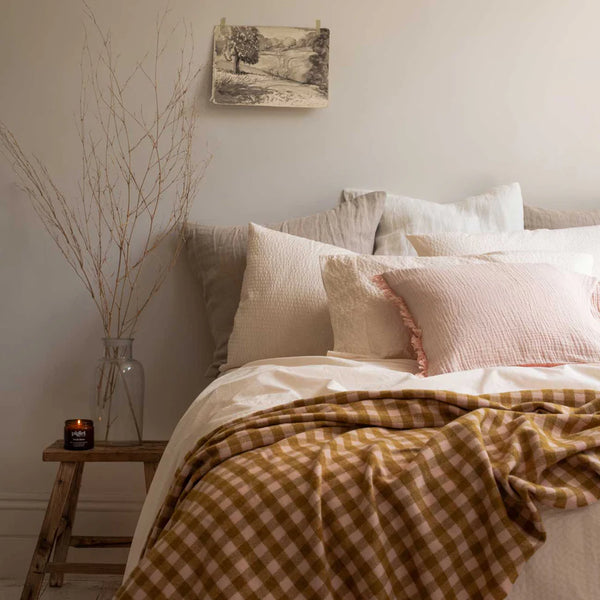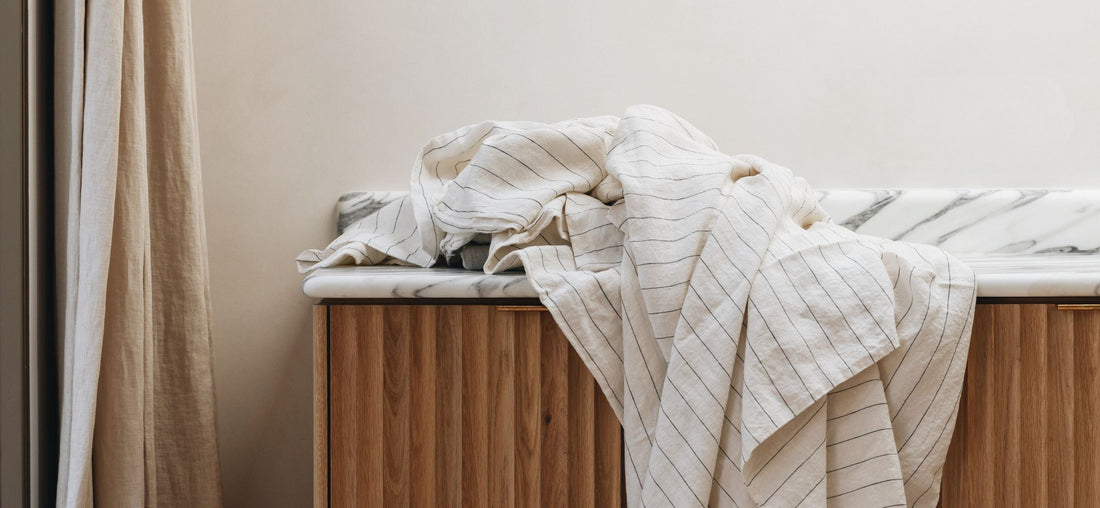Doing laundry may not be the most exciting task on your to-do list, but if you want your new bedding or favorite pajamas to last as long as possible, looking after them is a good place to start. From sorting your laundry to choosing the right wash cycle, having simple processes in place can go a long way in helping to lighten the load and prolong the life of your linens.
In this step-by-step guide, we’ll cover everything you need to know about doing your laundry to keep your bedding and sleepwear in tip-top condition. With a few handy hacks thrown in for good measure, we hope our laundry lowdown will help make washday slightly less of a chore, too!
Step 1: Sort into Separate Washes
Start by sorting your laundry by color, separating items into piles of whites, lights, darks and delicates. Deep-colored dyes such as black, red, navy, brown or dark gray should go in the darks pile, while colors such as pink, lavender, light blue, yellow and light gray items should go in the lights pile. Don’t cut corners on this first step – no one wants to end up with a rogue red sock in their pristine white wash!
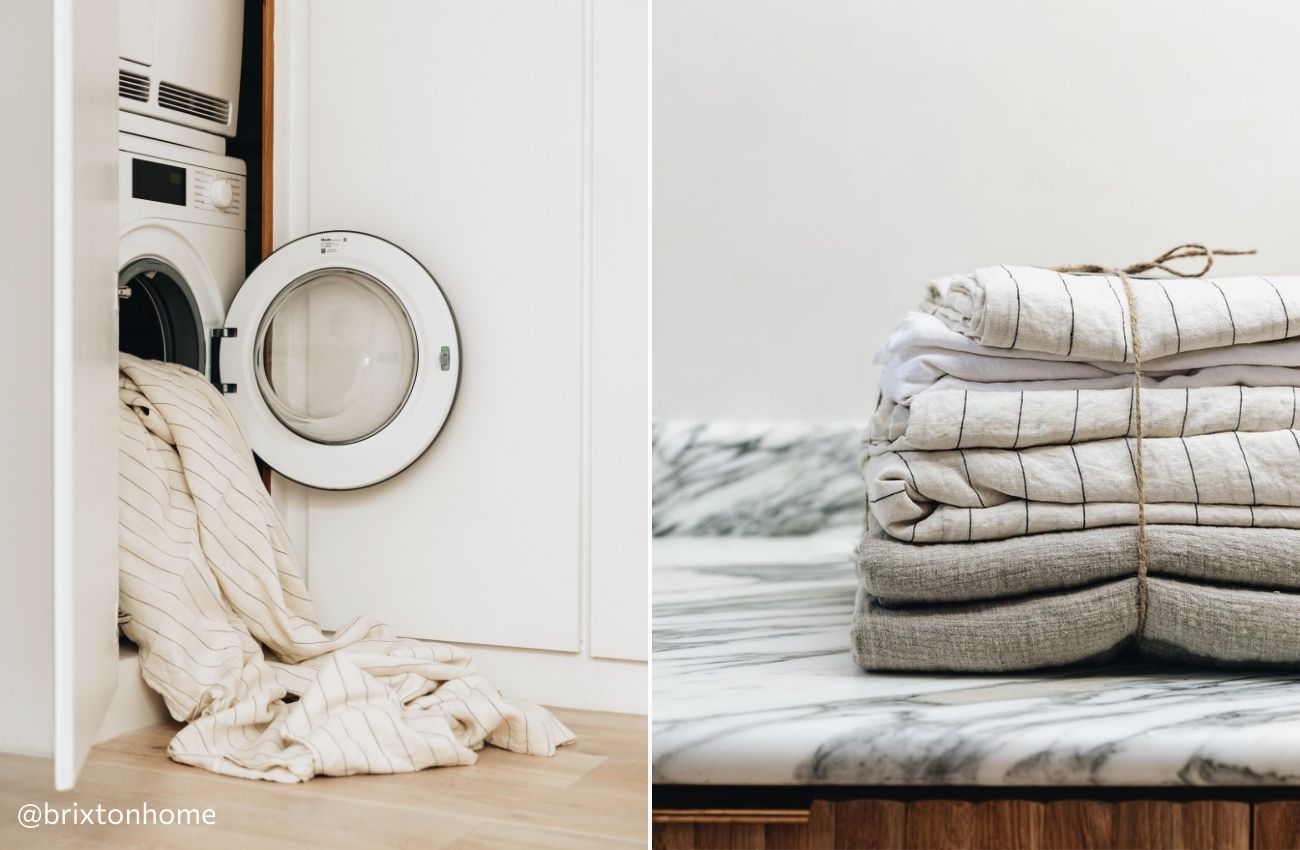
If you want to reduce the number of loads, you can combine whites and lights, but beware that over time, your whites might become slightly grayish. On the other hand, if you want to be extra cautious and keep your colors looking fresh, consider having a separate pile for red and pink items to minimize color transfer.
What about items with multiple colors, like our striped and gingham patterns? Sort these according to the primary color, or if the colors are even, take your pick of the piles!
Remember to remove any items that are particularly mucky or stinky, like sweaty gym gear or muddy leggings from the morning’s dog walk, as you’ll want to wash these separately. And try not to mix lint ‘givers’, such as towels, with lint ‘receivers’, such as knits.
Step 2: Read the Care Labels
Care labels will tell you everything you need to know about washing and drying your favorite items. Take the time to read and understand these labels to prevent any damage or shrinkage to your clothing or bedding. We don’t want you opening the washing machine door to pint-size bedding – save that for Frog and Toad!

Next, sort your laundry piles by material so that items in each pile have the same care requirements. If you need to combine different fabrics to make up a full load, select the wash cycle that suits the most delicate of items in the machine.
Be sure to remove handwash-only items from the pile so they don’t fall victim to the machine.
Read more: A Complete Guide to Washing your Linen Bedding
Step 3: Pretreat Stains
Before throwing your clothes into the washing machine, spend some time pre-treating any stains. This gives the stain remover time to work, providing the best chance of getting pesky stains out. How you treat a stain will depend on what type of stain it is and the type of fabric you’re dealing with, but we generally don’t recommend using bleach.
Read more: How To Remove Stains from Linen
Step 4: Add Detergent and Fabric Softener
Next, you’ll want to add an effective laundry detergent that removes stains and keeps your items smelling beautifully fresh. We recommend using a detergent that’s free of harmful chemicals, which will be kinder on your skin, your clothing, and the environment.
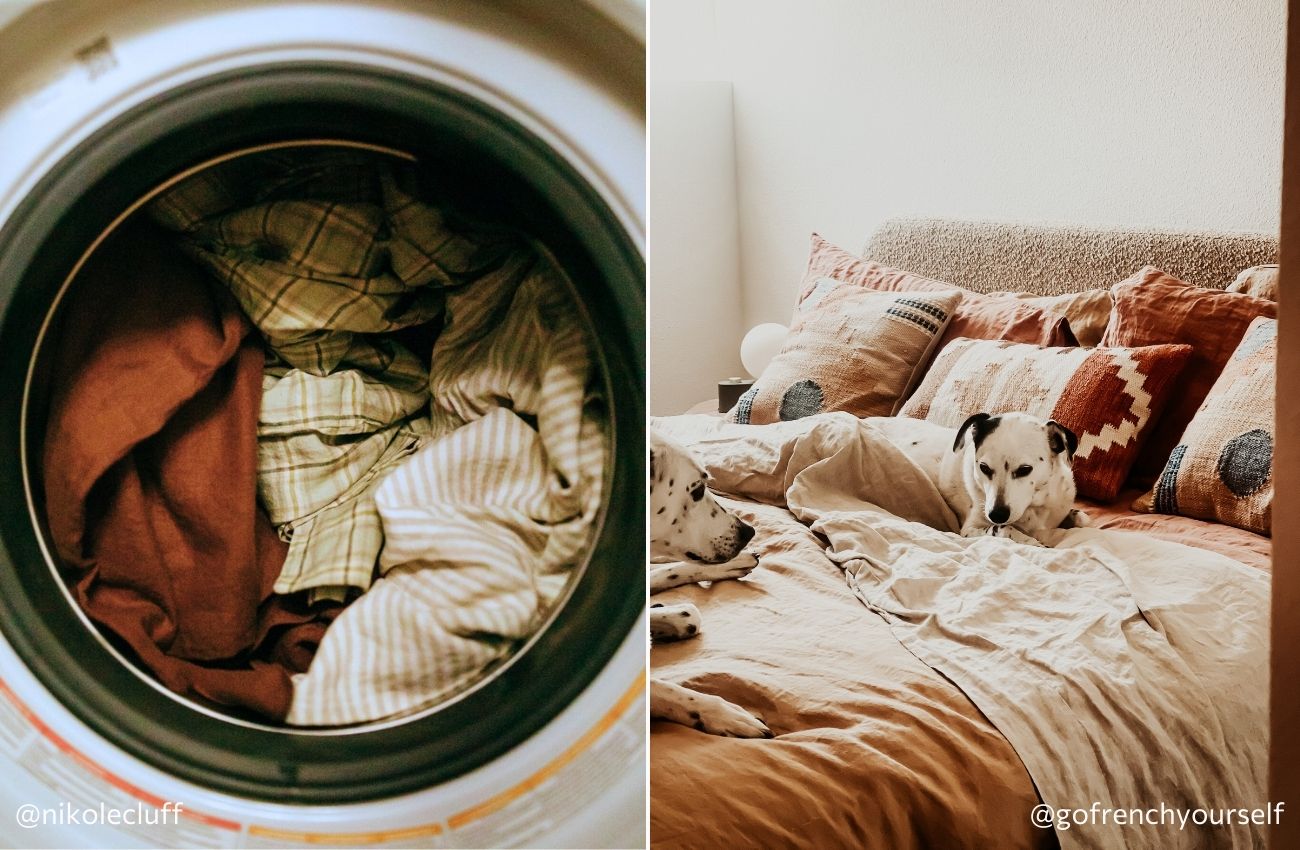
Only add as much detergent as you need for the wash. Use the cap (or scoop if you’re using washing powder) to measure the amount based on the size of the load and how dirty your washing is. Too much detergent will leave a residue on your items, and not enough may mean your items don’t come out thoroughly clean.
For cotton bedding, feel free to add a splash of fabric softener to keep your laundry feeling soft and fresh – but do so sparingly. Overuse can lead to residue build-up, which over time can affect cotton's natural properties like its breathability. Note that we don’t recommend using fabric softener on our linen products, or on towels, as it can reduce absorbency.
Step 5: Choose the Right Wash Cycle
Washing machine cycles are based on three main functions: water temperature, cycle length and cycle speed. Most machines are pre-programmed with lots of cycles, so check your manual to learn about the different options. In general, longer and warmer cycles are suitable for more durable items like towels and sheets, while delicate or woollen items require shorter and colder washes.
If in doubt, go for a cold wash. Virtually all laundry detergents work with cold washes, which are best for preserving the color of clothing and bedding and minimize the chance of shrinkage. The same principle goes for choosing an express wash over a longer cycle. Cold, quick washes are the least abrasive option and they use less energy, which ultimately means they are kinder to clothes, the planet and your pocket. The less time your clothes and sheets spend in the washing machine, they longer they’ll last!
Read more: Towels: Our Top Care Tips
Step 6: Load Your Items into the Washing Machine
Take a little bit of time to do some final checks before adding your items to the machine. Check pockets for any lurking items (nobody wants to find that an old tissue accidentally entered the wash), button up your duvet cover to avoid items climbing their way in mid-cycle, and fasten the buttons on pajama shirts and night dresses to help them keep their shape. For darker items, turn them inside out to preserve their color, and add delicates or smaller items to a laundry bag for added protection.
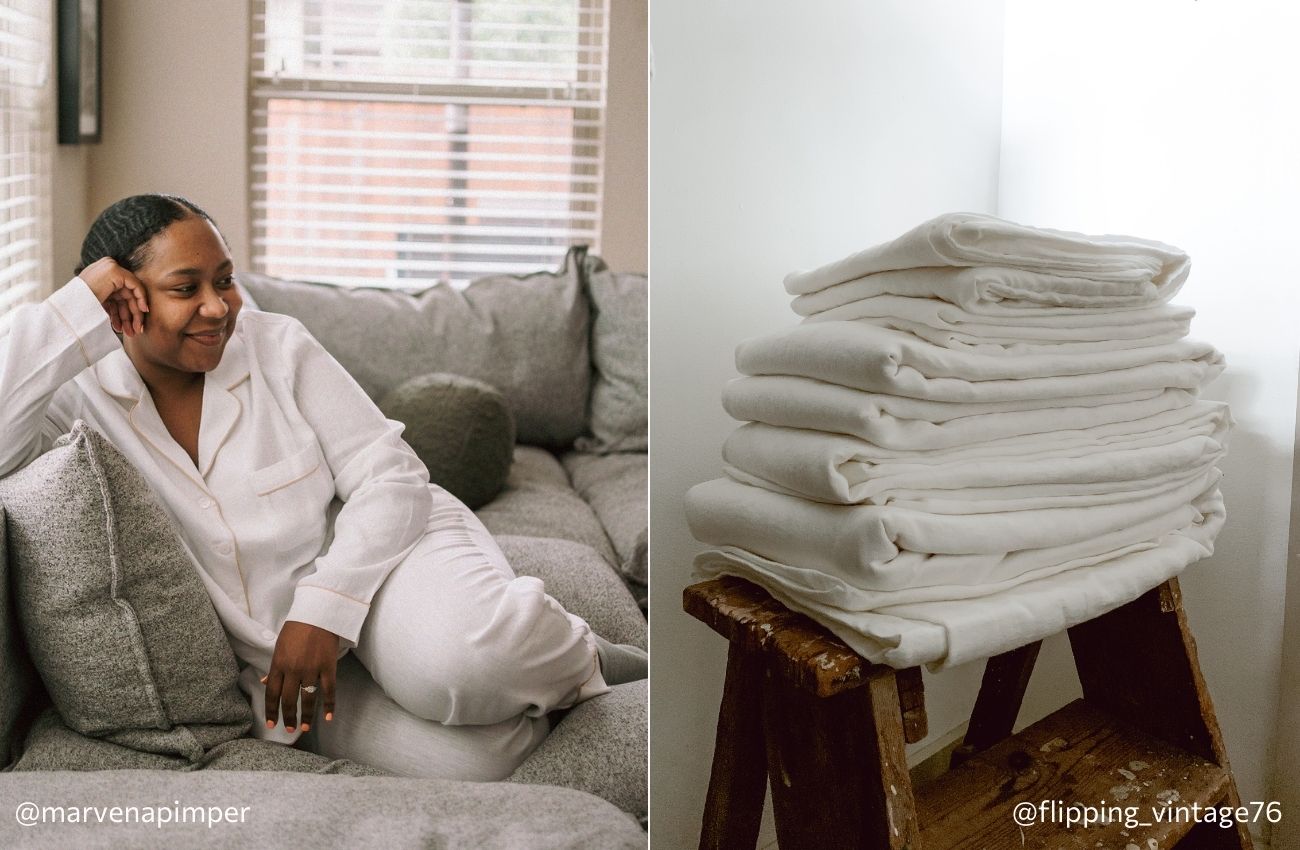
Lastly, make sure not to overload the drum. If you squeeze too much in, there will be less water for the laundry detergent to dissolve in, so leave at least a hands width gap at the top of the drum.
Read more: How to Keep Your Pillows Fresh
Step 7: Unload Your Laundry Promptly
To keep your items as wrinkle-free as possible, remove your laundry promptly from the washing machine. Give your items a few good flicks to shake out any big wrinkles and then refer back to the care labels to determine the appropriate drying instructions for each item.
If tumble drying, regular and mixed load cycles on a low temperature are usually suitable for most items, including sheets and towels. Add woollen laundry balls to the drum to lift and separate the items as they tumble. This will naturally soften fabrics and improve air circulation to cut down on drying time and minimize creasing.
Air drying is a great method for drying laundry, particularly cottons and linens. Whenever you get the chance, hang your laundry out on the line or use a drying rack. Air drying will save you some pennies while also helping your clothes and bedding last longer, since they won’t be exposed to heat.
Step 8: Get Rid of Wrinkles
We think life is too short for ironing bed sheets but appreciate that not everyone likes to embrace the wrinkles. If you prefer a crisp look, give your sheets a quick steam or iron. Steaming is gentler on clothing and bedding, so will help them last longer. Natural linen mists can also come in handy for adding extra freshness to bedding and clothing, and helping remove creases and wrinkles.
